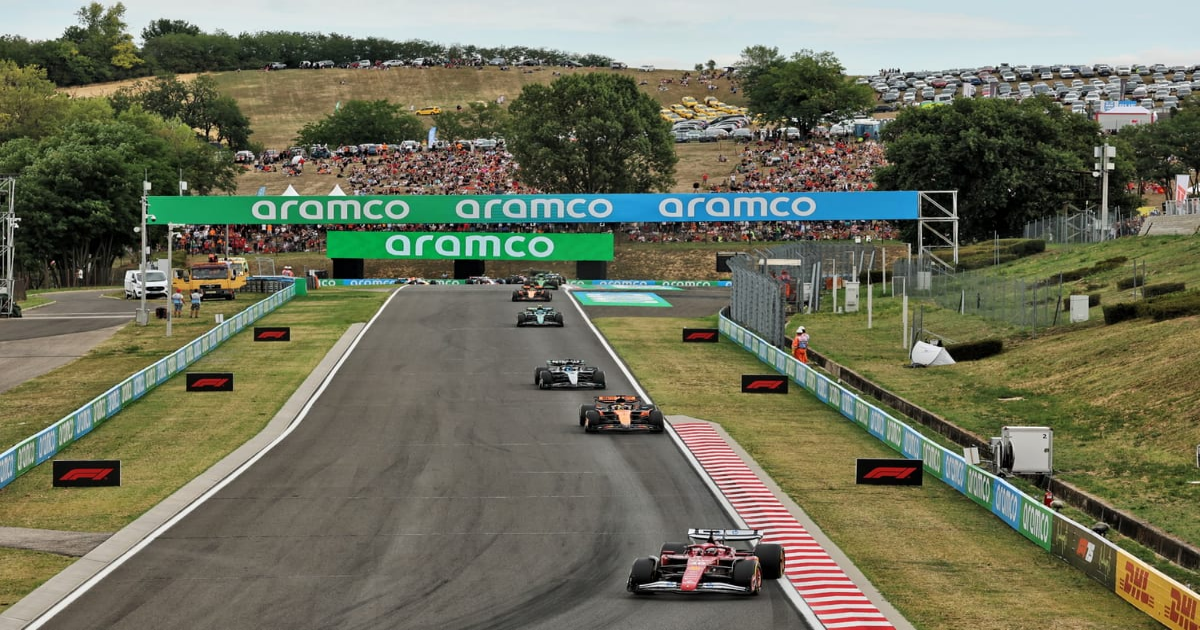An atypically fast Ferrari combined with the freakish effect of the wind on the otherwise super-fast McLaren the day before set in motion a chain of events which allowed Lando Norris to defeat Oscar Piastri in the Hungarian Grand Prix very much against the run of play.
Once the first couple of corners had played out with Charles Leclerc’s Ferrari converting its pole to the lead, being chased by Piastri – and with Norris down in fifth, having got himself in all the wrong places in trying to pass Piastri – the destiny of the race looked likely to be Piastri somehow finding a way around a slower Ferrari at some stage during what was expected to be a two-stop race.
Norris in turn – depending upon how long it took him to clear Fernando Alonso’s Aston Martin and George Russell’s Mercedes, who’d muscled past in the opening seconds – might have been expected to then have taken the battle to Leclerc as Piastri soared away.
But it didn’t play out like that at all. The Ferrari really was unexpectedly fast. Sure, it had set pole but we don’t need to recount here how in reality it had been 0.5s slower than the McLarens before the wind played its tricks. Yet now, in the race’s early stages Leclerc was actually pulling away from Piastri.
You lose a lot of laptime in dirty air here, so it was partly that and Piastri not wanting to cane his tyres. But it wasn’t only that; Leclerc had genuinely great race pace. It all left McLaren a little stunned.

What the hell was happening here? Well, the Ferrari was running very low – as could be observed in the early laps by the amount of sparks flying out the back.
Ferrari and Leclerc reckoned the Hungaroring offered them the best chance in the remainder of the season to be competitive. It seems as if they took the racy option on ride height so as to maximise that rare opportunity. That way they could boost themselves in qualifying, get a good race position around a track on which it’s difficult to pass and then control the plank wear later on. Perhaps with tyre pressures, maybe with a little help from the power unit and the driver.
It was a gamble but it was calculated. The pole was just an unexpected bonus, a little present provided by the wind. A wind that perhaps was kinder on a car running super-low to the ground and not therefore losing as much underfloor downforce when the crosswinds had hit, and which had a wind-friendly understeer balance.
The crosswinds were still there early in the race and that, too, probably contributed to the situation. It all left Piastri losing time in the Ferrari’s dirty air – and obliged him to take the fight to Leclerc rather than dictating his own race. Which locked him onto the same two-stop strategy, the one which looked significantly quicker on paper than the one-stop.
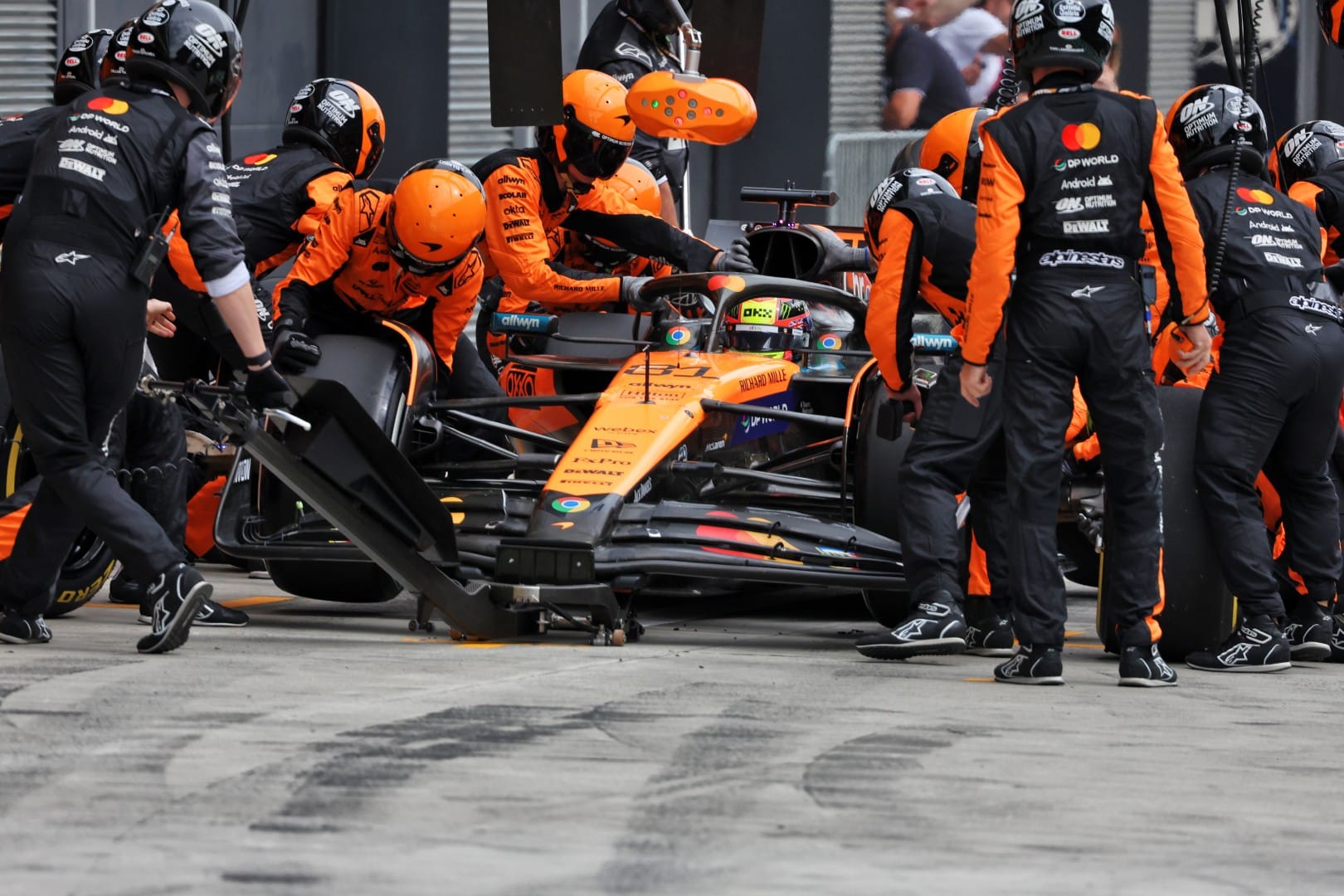
But it turns out the two-stop was only quicker in clean air. Ferrari’s gamble bust as Leclerc couldn’t even hang onto a podium position. But by that time Piastri had spent 50 laps in dirty air – which disadvantaged his two-stop over the one-stop Norris had switched to as a conservative damage recovery strategy.
Norris had passed Alonso quickly enough but couldn’t find a way by Russell. But when the Mercedes pitted out of his way, with Leclerc and Piastri also pitting as per a standard two-stop, and Norris had said ‘yeah, why not?’ to the suggestion of trying for a one-stop, he had a lot of clear air laps on the medium tyre. Clear air was king.
Norris’ pace during this phase was super-impressive. It had his engineer Will Joseph concerned he was pushing too hard as he set and reset the fastest lap. In reality, he was judging it perfectly. It ensured that Piastri came out 12s behind after making his second stop, with only 25 laps left. And still with a Ferrari to get by before he could even think of chasing Norris.
Leclerc’s race unravels
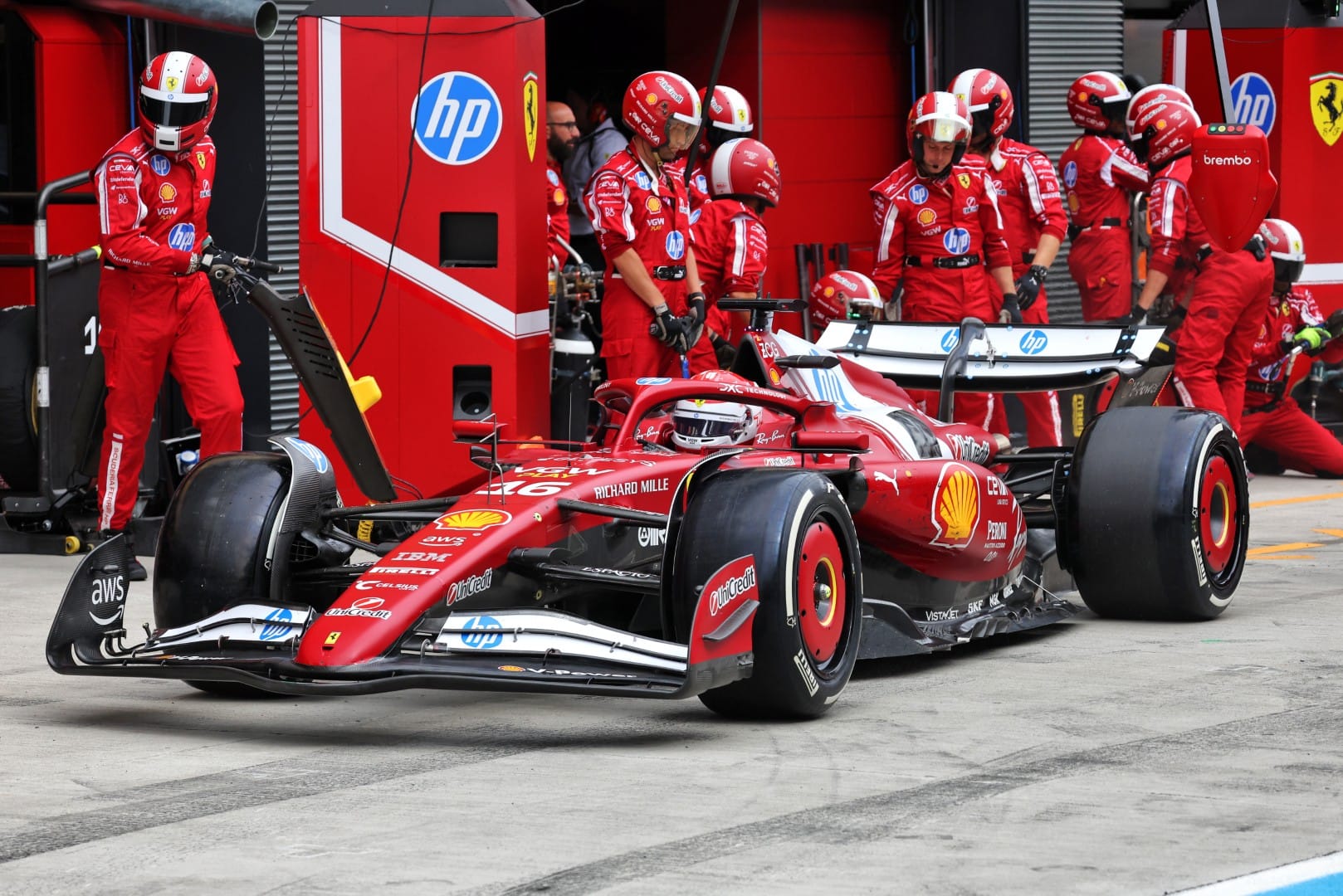
But that part proved surprisingly easy. The Ferrari’s pace had collapsed after its second stop and an angry Leclerc was describing it over the radio as “undriveable.” He‘d already had a minor rant on lap 27, eight laps after his first stop, saying: “I can feel what we discussed before the race. We need to discuss this before we do it… we are going to lose this race with this thing. I’m now losing so much time.”
What he was feeling was almost certainly the way the rubber had heated up beyond its optimum as a consequence of running higher tyre pressures so as to increase the ride height. To keep the plank legal.
OK, so the Ferrari wasn’t as good as it had been in that idealised first stint and couldn’t this time pull out any distance on Piastri, but it was still plenty fast enough to retain his position over the McLaren driver, who remained 1-2s behind until McLaren dummied Ferrari into bringing Leclerc in on lap 40, then stayed out another five laps, creating a tyre offset.
That increased the Ferrari’s gap to 5s. But the Ferrari was nowhere near as much faster on new tyres than it should have been. It was now not even fast at the end of the straights, despite its lower downforce level. Piastri rejoined, lapping around 1s faster, and breezed by easily at the end of the DRS zone on lap 51, with 19 to go.
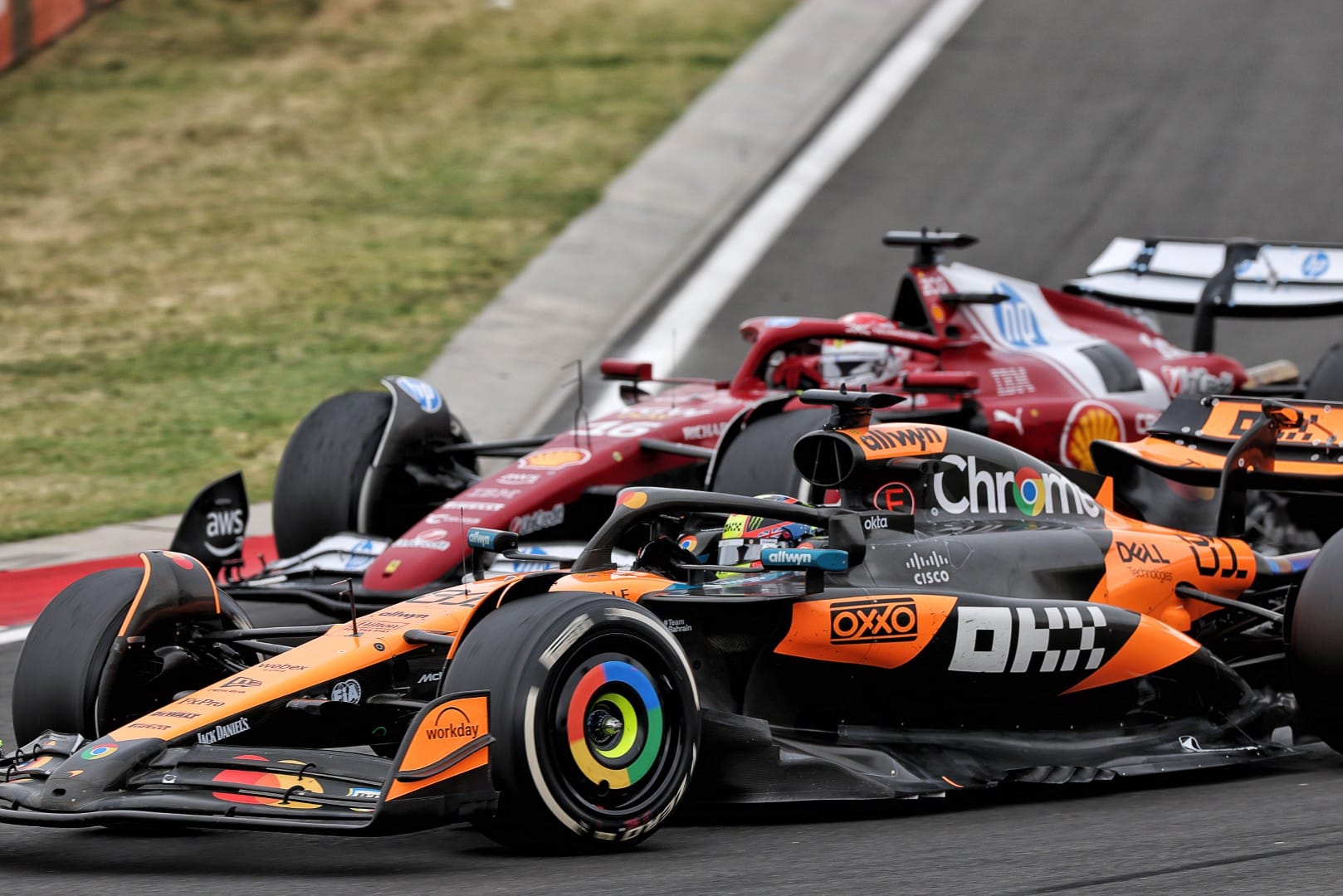
That’s when Leclerc had his second outburst. “If you had listened to me I could have found a different way of handling those issues… the car is now absolutely undriveable.”
It was clearly a sensitive issue and he tried to retract the comments afterwards, saying: “I need to take back the words I said on the radio because I thought that it was coming from one thing and then I got a lot more detail since I got out of the car – and it was actually an issue coming from the chassis and nothing that we could have done differently.”
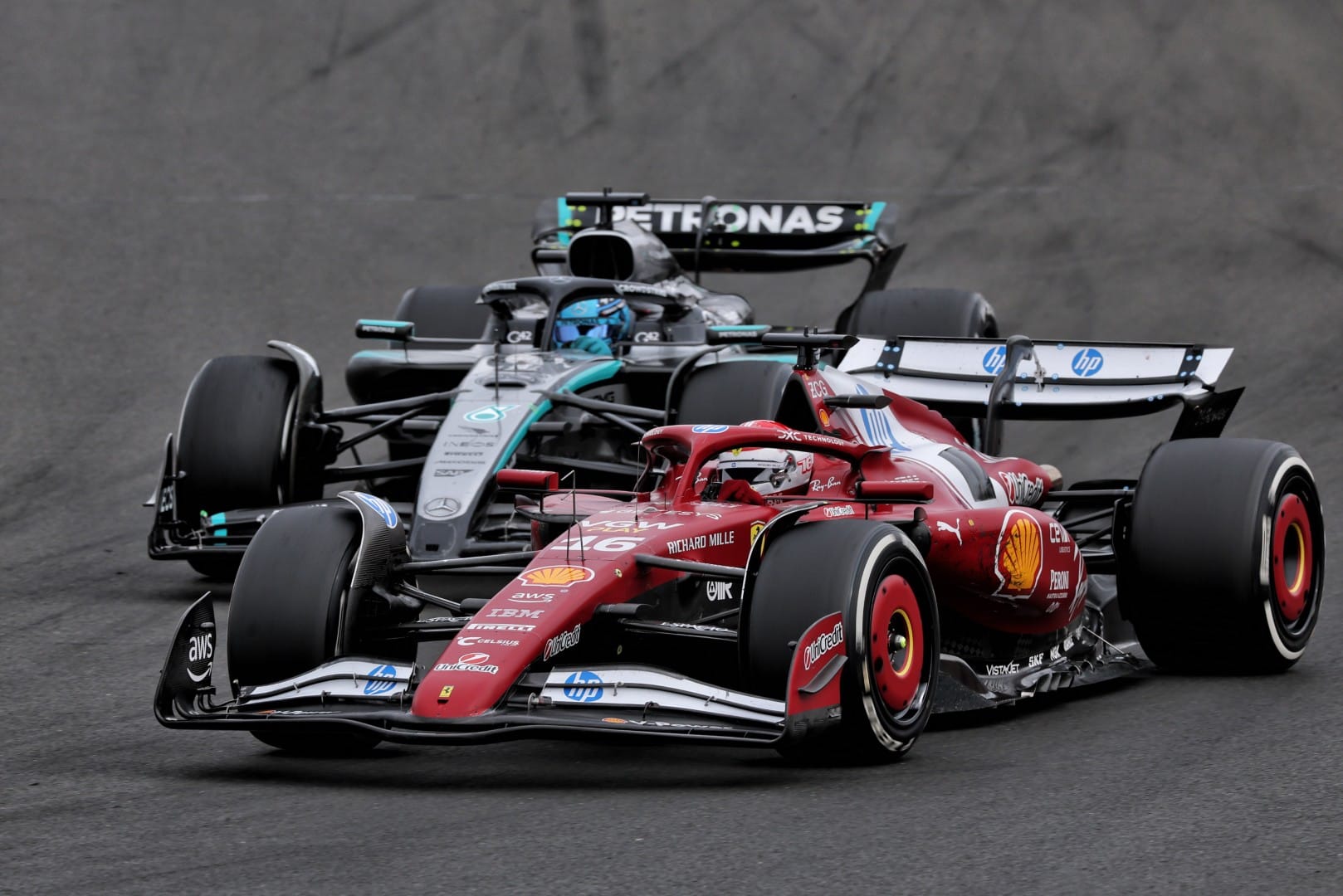
Leclerc said he had thought a pitstop front wing change had induced this. In any case, the ‘issue coming from chassis’ is entirely consistent with his car running too high to work properly on account of the tyre pressures. As was the lack of end-of-straight speed – with a deployment map which reduced the speeds at the points where the plank takes the biggest hammering.
Could it be that Leclerc would have preferred to have controlled this himself, without recourse to the balance and speed-destroying adjustments? As recently as Spa, Lewis Hamilton drove through much of the race lifting-and-coasting so as to contain plank wear.
Ferrari team boss Fred Vasseur, post-race, insisted the full explanation was not that simple, and when the issue of previous mid-race pace losses this year (to control plank wear) was brought up he argued the performance drop in Hungary was much more dramatic.
As Leclerc faded further, so he was passed by Russell – after a bit of ill-natured moving in the braking zone – for the final podium slot.
Norris hangs on (and nearly gets crashed into)
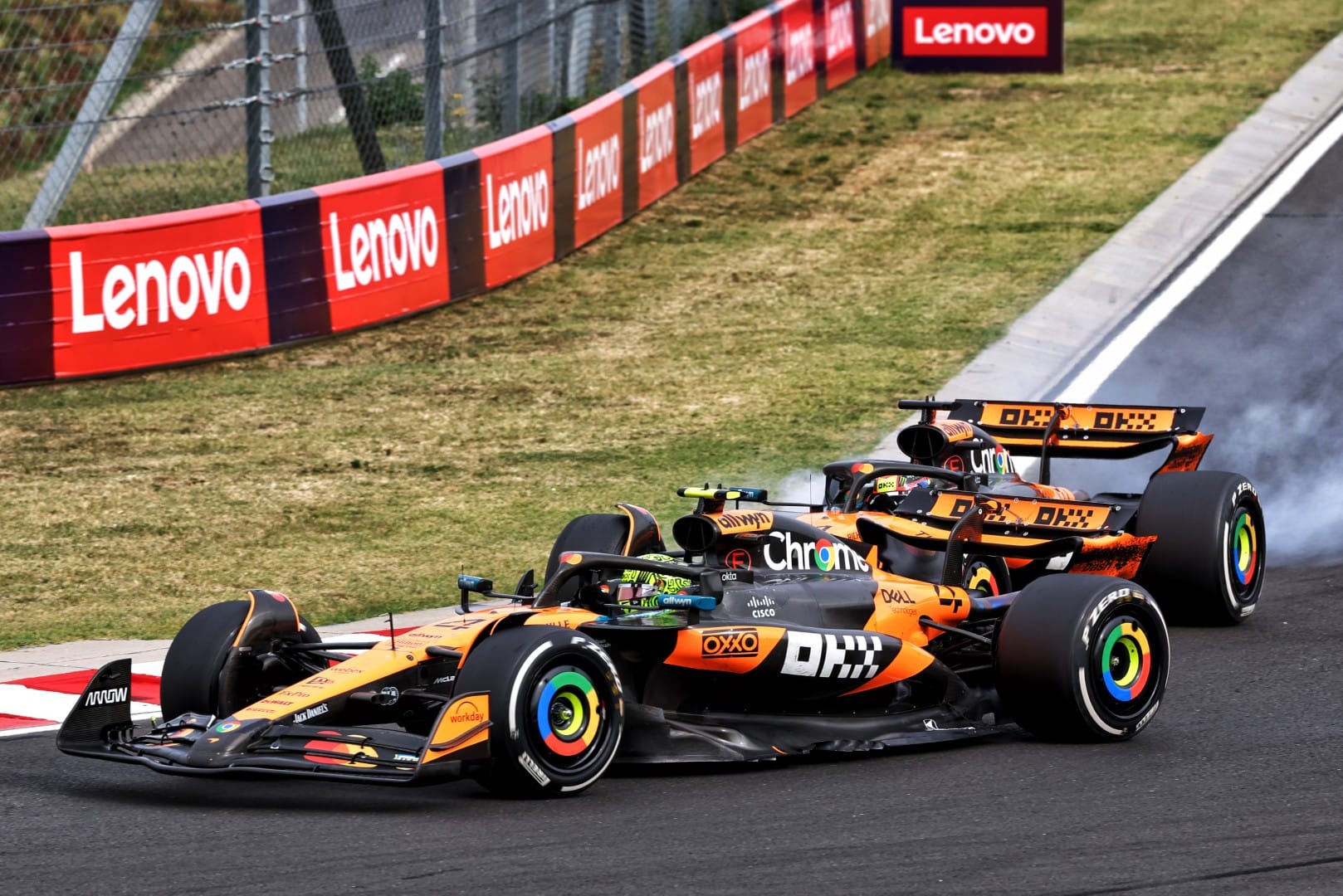
All that time stuck behind the Ferrari in the second stint, when Leclerc was still baseline competitive, had hurt Piastri’s chances relative to Norris. For that reason, the one-stop had worked brilliantly well – and Norris had maximised that opportunity with his great pace in clear air.
Taking on Leclerc (unnecessarily in hindsight) had cost Piastri position to Norris – and now he set about catching him on tyres 14 laps newer. With the help of a bit of traffic, he got what had been a 12s deficit with 25 laps to go down to DRS zone closeness with five laps still to go. Surely, he’d get by.
“No. I knew even with the tyre offset it would be tough,” related a disappointed Piastri later. “Catching him was relatively easy. Overtaking a completely different story. As soon as you close up it becomes incredibly tough to stay close enough.
“There are so many corners where you lose touch and then those then long corners at the end of the lap – which, when you’re following, just kills your downforce. Even if I had more laps I’m not sure it would’ve been different.

“Getting to within six-seven tenths is doable. But I’d have needed to have been on brand new softs to pass after that.”
He gave it a mighty go, never more closely than on the entry to Turn 1 with two laps to go when he locked up and avoided the back of Norris by millimetres. The McLaren driver harmony almost came to an end in that split-second and Russell almost won the race. Norris, meanwhile, concentration in overdrive, just ensured he made not a single lock-up or run-wide on his very worn old rubber. He won. The opportunity was lucky but the conversion was perfect.
The one-stop worked too for Fernando Alonso and his protege Gabriel Bortoleto in fifth and sixth. The Aston Martin was working well on a track where aero efficiency is less important than raw downforce and Bortoleto’s sparkle in the Sauber is becoming more consistently impressive.
Lance Stroll’s Aston Martin followed them home ahead of Liam Lawson’s Racing Bulls, which fended off the two-stopping Red Bull of Max Verstappen. Hamilton – still desperately downbeat – never broke free from the also-rans he’d qualified amongst and was a distant 12th.
It was an odd weekend in the shaping of the race. But the end result was quite familiar.
